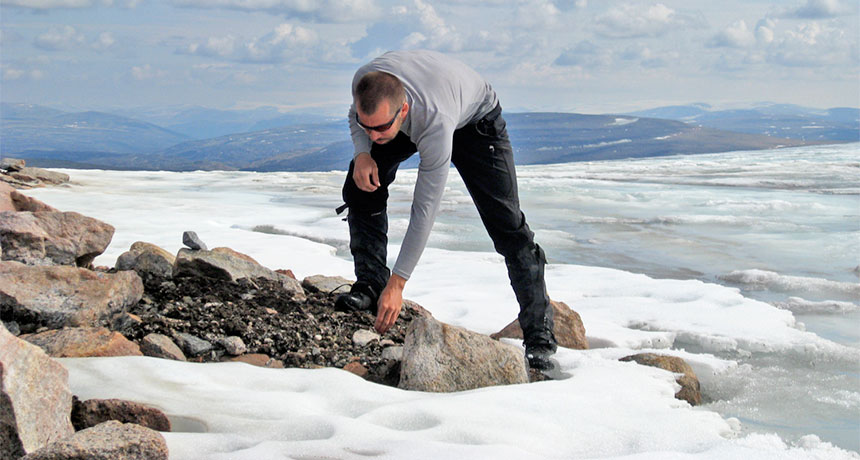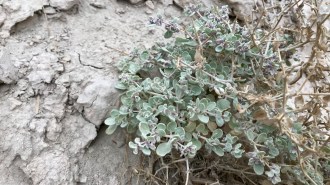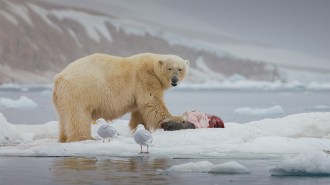As ice retreats, frozen mosses emerge to tell climate change tale
Dating of plants suggests summer’s hotter now than it’s been in at least 45,000 years, if not longer

ICE FREED Geologist Kurt Refsnider, now at Prescott College in Arizona, collects mosses revealed by retreating ice on Canada’s Baffin Island. Radiocarbon dates for the mosses suggest the region has less ice cover now than it did 45,000 years ago.
G. Miller






